Submitted by Taps Coogan on the 29th of January 2020 to The Sounding Line.
Enjoy The Sounding Line? Click here to subscribe for free.
Enjoy The Sounding Line? Click here to subscribe.
With oil and natural gas prices falling aggressively over the past month amid global growth concerns, a warm winter, and strong US production, it seems as good a time as ever to analyze production in the US shale patch, the source of most global production growth over the past decade.
US shale oil and gas production is centered in seven major basins: Anadarko, Appalachia, Bakken, Eagle Ford, Haynesville, Niobrara, and the Permian. Over the coming days, we will share a collection of charts which detail oil and gas production, the number of drilling rigs and wells completed, and a few measures of productivity in each region. All the charts are based on the most recent data from the US Energy Information Agency.
Today we look at the Anadarko Basin:
Anadarko Oil Production
Anadarko oil production declined to slightly more than 553,000 barrels per day (b/d) in January 2020, a level first reached in July 2019.

Legacy Oil Production
The following chart shows the monthly change in oil production from wells drilled in prior months. In other words, it shows the production decline rate of wells older than a month. That decline rate reached a record 45,365 b/d in January 2020.
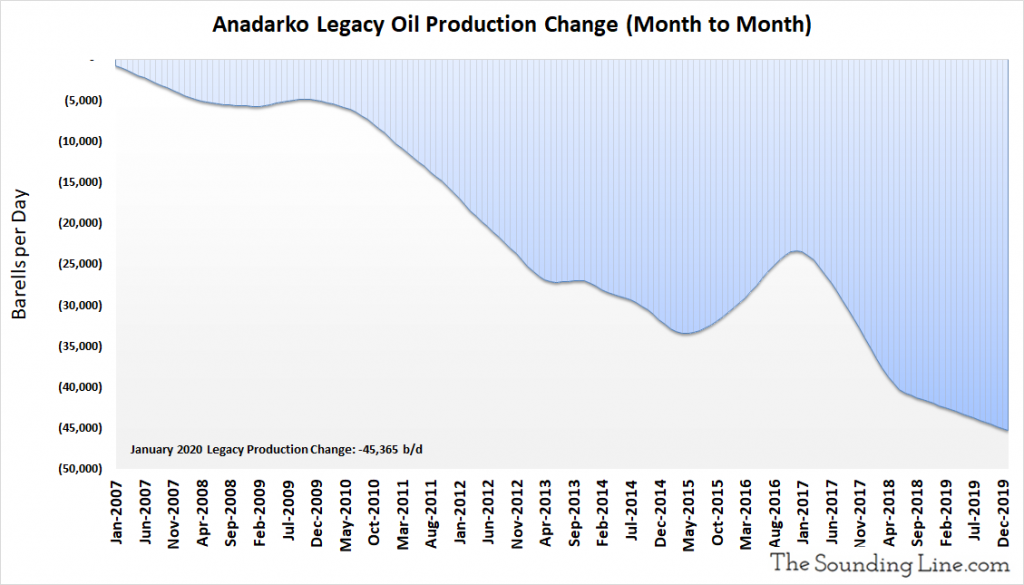
Rig Count
The following chart shows the number of active oil and gas drilling rigs in any given month. In November 2019, the most recent date for which data is available, rigs hit the lowest level on record, just 48.
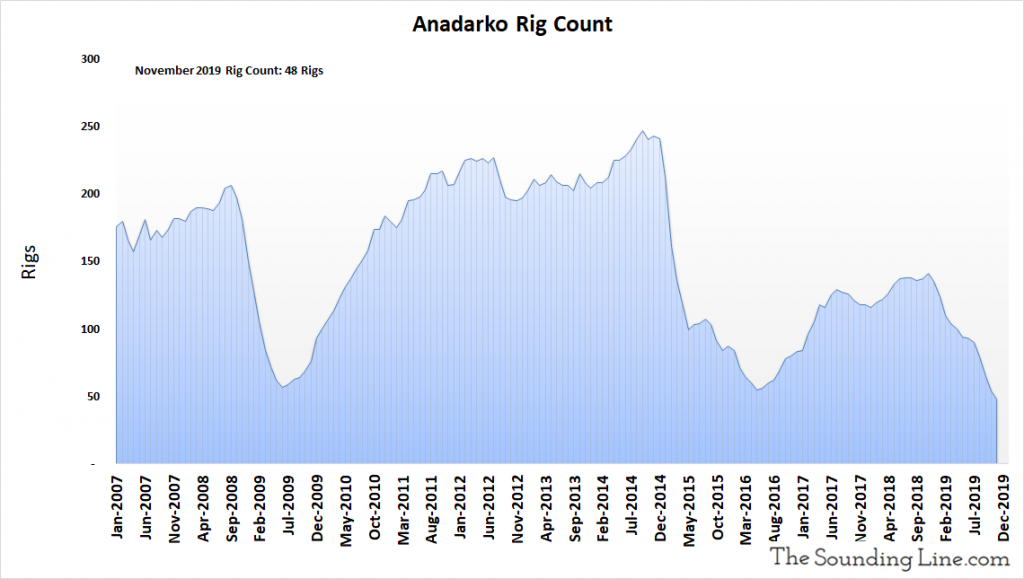
DUC Well Count
The DUC well count is the number of drilled but uncompleted wells in the Anadarko region. These represent an inventory of wells that have already been drilled by rigs but are not yet producing oil or gas. This inventory fell to 679 wells as of November 2019, the lowest level since May 2017 and a 36% decline from the peak.
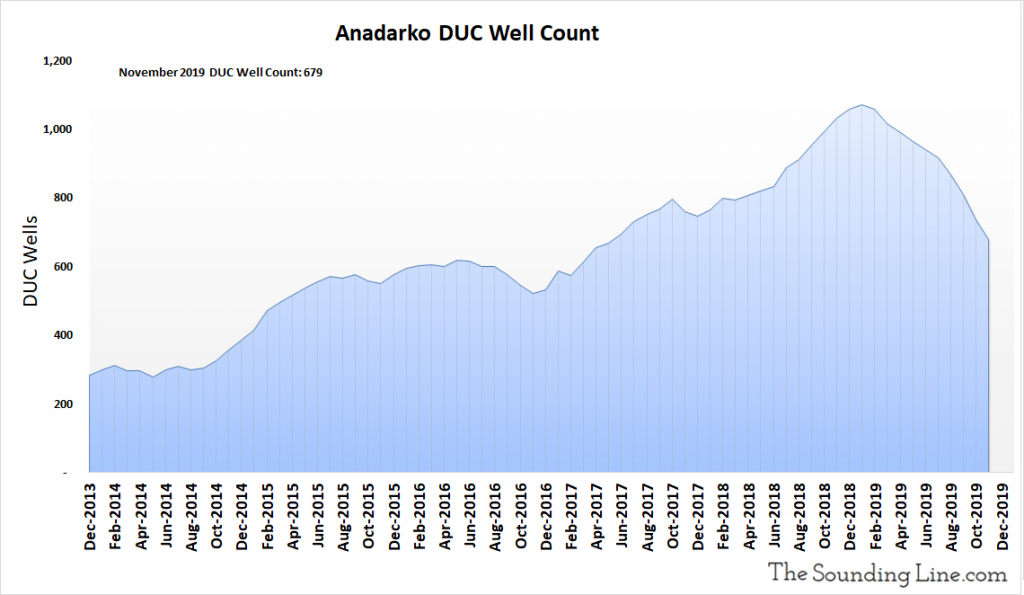
Anadarko Wells Drilled per Month
The following chart shows the number of new oil and gas wells drilled every month. Just 61 were drilled in November 2019, the lowest number on record.
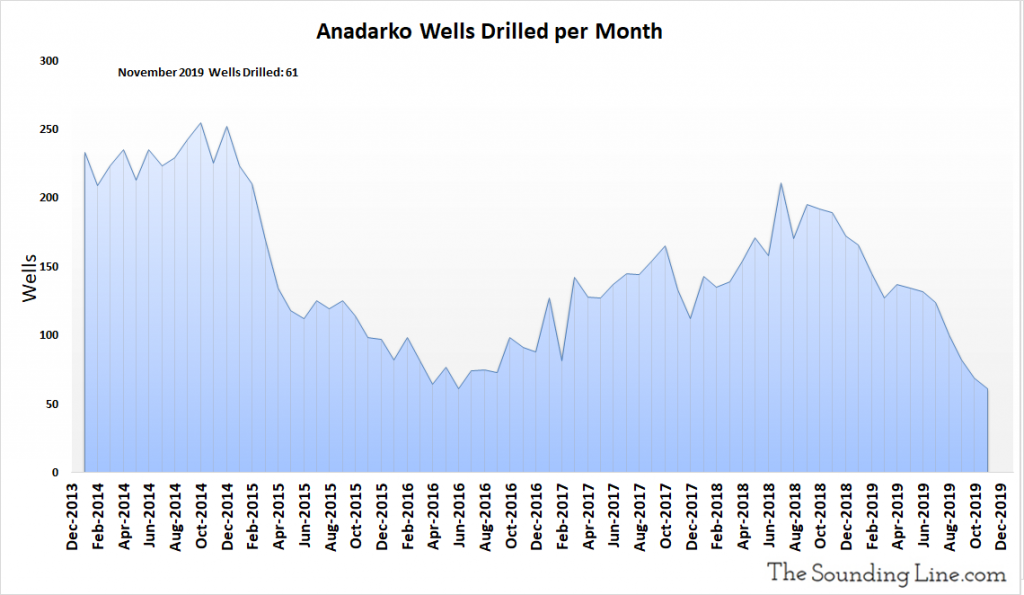
Oil Production from Wells Completed Each Month
The following chart shows the oil production from just those wells that were completed in any given month. That may include wells that were previously DUC wells, but which were completed that month. Production from newly completed wells was 29,994 b/d as of January 2020, roughly the average since records began in 2014.
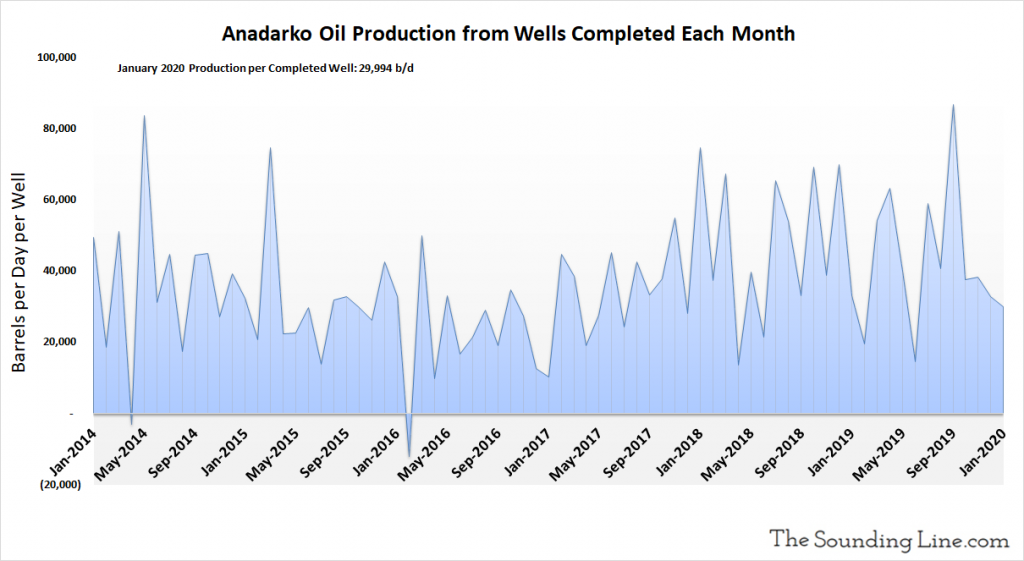
Oil Production from Wells Drilled and Completed Each Month, Excluding DUC Wells
The following chart excludes production from DUC wells completed in a given month and shows the production just from wells drilled and completed each month. It is an inferred number based on changes in production, legacy production, drilled wells, and completed wells. For months where the number of DUC wells increased, the implied production potential of those wells is included in the production figure, even though that oil was not yet produced. Production from newly drilled and completed wells was 19,565 barrels per day as of November 2019, modestly below the average since at least 2014.
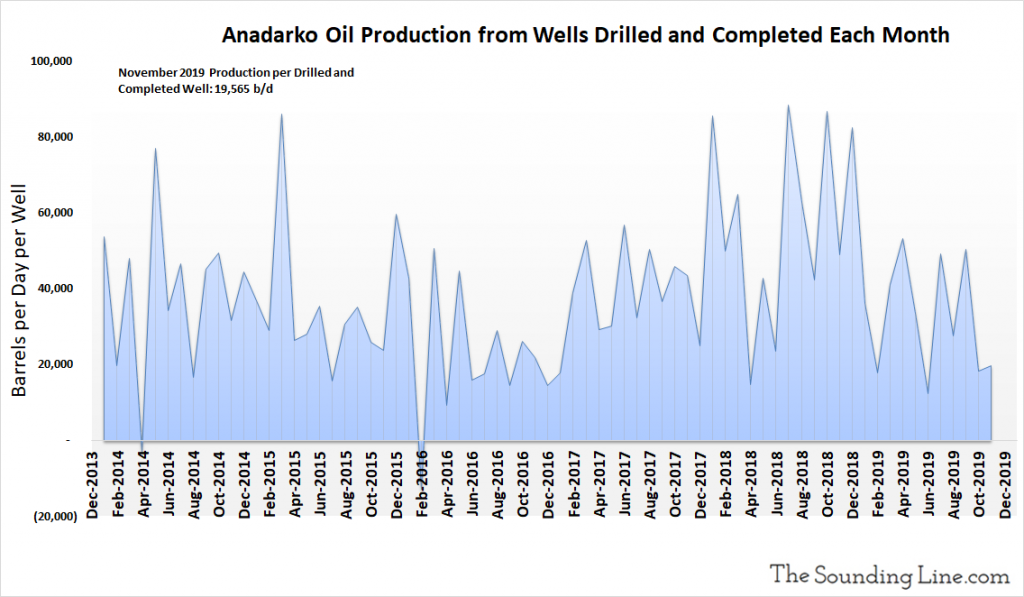
Oil Production per Well Completed Each Month
The following chart shows the oil production just from newly completed wells, per well, per month, including DUC wells which were completed. Production per completed well was 321 b/d as of November 2019, roughly the average since 2014. The fact that this figure has not been trending higher over time suggests that production growth in the Anadarko region has come strictly from drilling more wells, not from an increasing productivity of those wells.
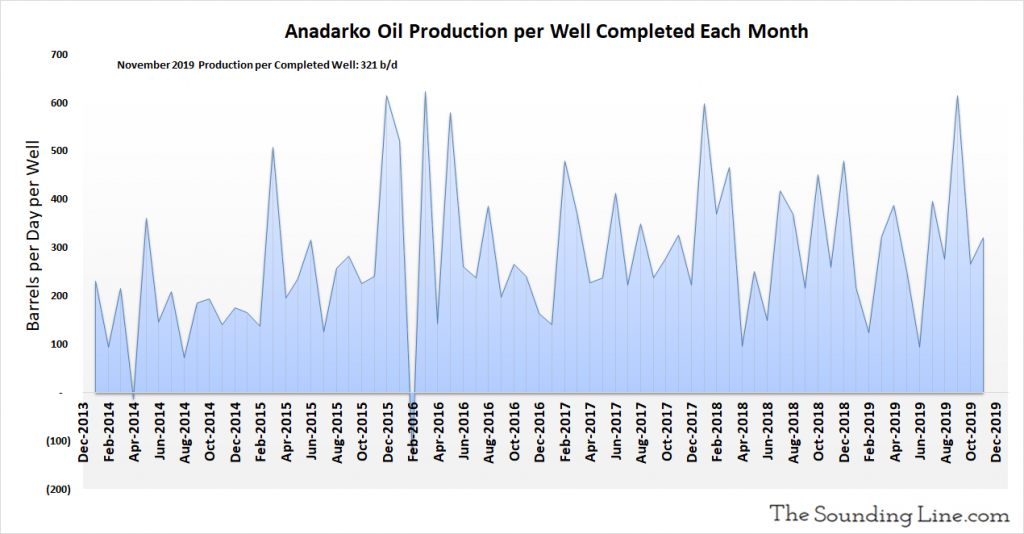
Anadarko Natural Gas Production
The following chart shows natural gas production in the Anadarko basin, which was 7,522,774 Million Cubic Feet per day (Mcf/d) as of January 2020. Production has been roughly flat since the start of 2019.
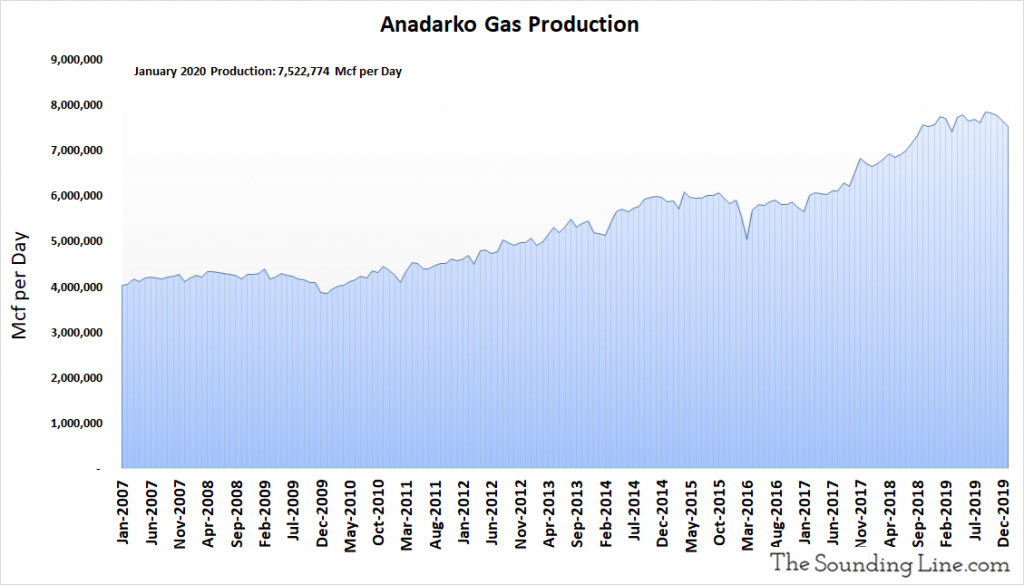
Legacy Natural Gas Production
As with legacy oil production, the following chart shows the monthly change in natural gas production from wells drilled in prior months. In other words, it shows the production decline rate of wells older than a month. That decline rate reached a record of over 335,000 Mcf/d in January 2020.
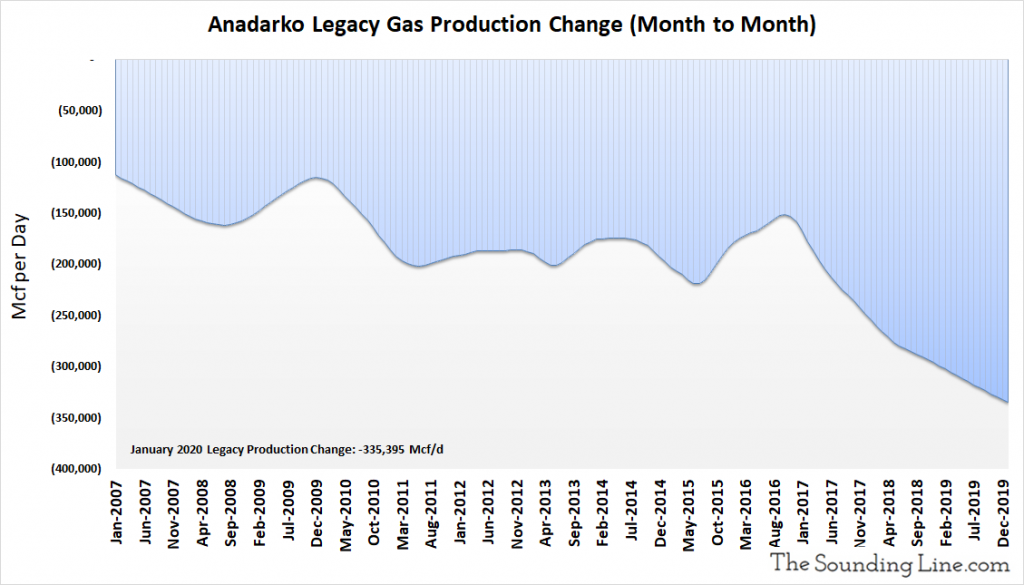
Gas Production from Wells Completed Each Month
The following chart shows the natural gas production from just those wells that were completed in any given month. That may include wells that were previously DUC wells. Production from newly completely wells was slightly over 263,000 Mcf/d, as of November 2019, roughly the average since records began in 2014.
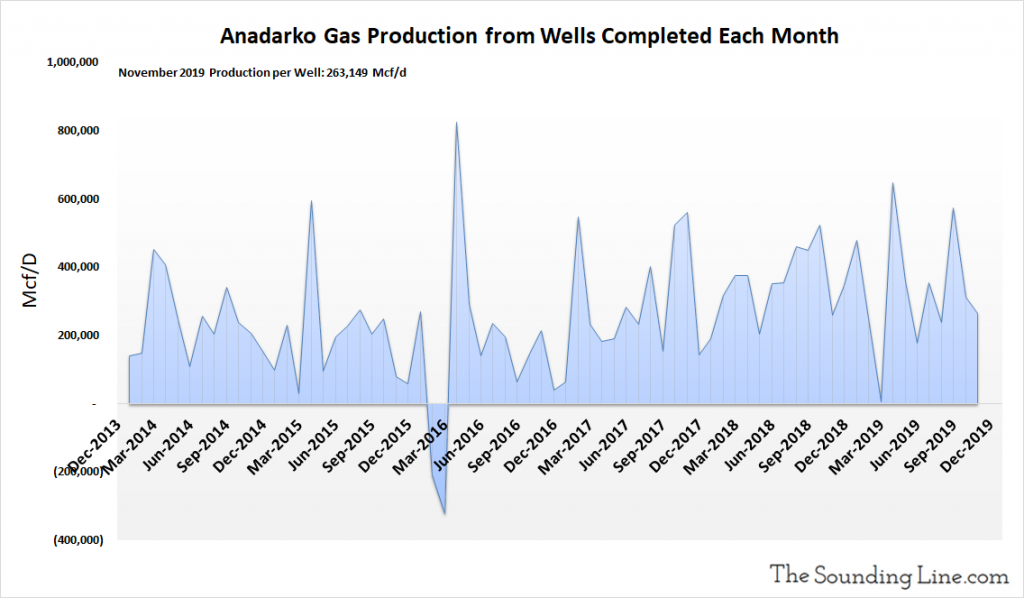
Some Thoughts
Oil and gas production in the Anadarko basin has been roughly flat since early 2019. The number of drilling rigs in the field and the number of new wells being drilled has hit the lowest levels on record. At the same time, there has not been noticeable increase in the amount of oil and gas being produced from each newly completed well.
The aforementioned statistics mean that the only reason oil and gas production in the Anadarko basin in not in an outright decline, is that producers are burning through their backlog of DUC wells. The number of DUC wells declined by over a third from January 2019 through November 2019, which means that at the current pace, producers will burn through their entire backlog within the next two years. Some analysts believe that the EIA’s DUC well figures may be heavily inflated, meaning producers may burn through the backlog much sooner.
Unless producers return large numbers of rigs to the field, which would presumably require significantly higher oil and gas prices, it looks the Anadarko region is headed for a structural decline in oil and gas production. This problem is compounded by the rising depletion rate of legacy wells, which means that ever more new wells must be drilled to simply make up for production declines in the older wells.
The Anadarko basin is just one shale region and not the largest. We will discuss the other basins in the coming days and weeks.
Would you like to be notified when we publish a new article on The Sounding Line? Click here to subscribe for free.
Would you like to be notified when we publish a new article on The Sounding Line? Click here to subscribe for free.

